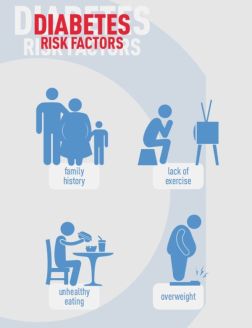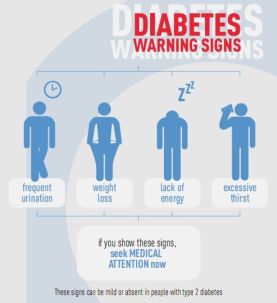
Today is World Diabetes Day, a campaign by the International Diabetes Federation to raise awareness about a disease affecting 371 million people, including 24.1 million in the United States. Prevalence is growing in every country and a person is diagnosed with diabetes every 17 seconds.
The numbers are striking. According to the American Diabetes Association:
- 1 in 12 Americans has diabetes
- 1 in 4 who have it don’t know they have it
- 1 in 3 Americans are at risk of developing type 2 diabetes in their lifetimes
Why should you care?
You should care because you probably know someone with diabetes, or you will in the not-too-distant future. You should care because diabetes is the leading cause of cardiovascular disease, blindness, kidney failure and lower limb amputation and because more healthcare dollars are spent on it in North America than in any other region of the world. You should care because the percentage of Wyomingites with the disease has almost doubled from 1994 to 2010, from 3.5 percent to 6.6 percent.
Wyoming Medical Center’s diabetes educators see nearly 3,000 patients every year. At our nationally recognized Diabetes Care Center, we help people manage the disease while reducing risk of complications.
World Diabetes Day is celebrated every Nov. 14, but we don’t want the discussion to end here. Today, The Pulse kicks off a new community-health project, Decoding Diabetes, a series of articles focusing on education, prevention and tips for living with the disease. We will publish the articles here for the next several Thursdays.
If you’d like to see an article on a particular topic, or if you’d like to share your own diabetes story, email The Pulse editor Kristy Bleizeffer at kbleizeffer@WyomingMedicalCenter.org.
For our first installment, we are passing on this great education from the World Diabetes Day campaign.
Risk factors

Type 1 diabetes risk factors are not yet known, but a family history has been shown to slightly increase the risk. Type 2 diabetes is often preventable and is linked to several risk factors:
- Family history of diabetes
- Overweight
- Unhealthy diet
- Physical inactivity
- Increasing age
- High blood pressure
- Ethnicity
- Impaired Glucose Tolerance (IGT)*
- History of gestational diabetes
- Poor nutrition during pregnancy
Signs and symptoms

The signs and symptoms are similar for type 1 and type 2 diabetes, but type 1 usually develops suddenly and the symptoms may be more acute. Symptoms for type 2 may be more gradual or mild, making it harder to detect. In either case, there may be no symptoms at all. Diagnosis cannot be made through any internet article, so you’ll need to see your doctor if you suspect diabetes. Some commonly experienced symptoms include:
- Frequent urination
- Excessive thirst
- Increased hunger
- Weight loss
- Tiredness
- Lack of interest and concentration
- A tingling sensation or numbness in the hands or feet
- Blurred vision
- Frequent infections
- Slow-healing wounds
- Vomiting and stomach pain (often mistaken as the flu)
 Mary Tvedt is a certified diabetes educator and has managed the Diabetes Care Center at Wyoming Medical Center for the past seven years. She has a bachelor’s degree in foods and human nutrition with a minor in child development and family science from North Dakota State University. If you have concerns about diabetes talk to your doctor. To learn more about services at the Diabetes Care Center, call (307) 577-2592.
Mary Tvedt is a certified diabetes educator and has managed the Diabetes Care Center at Wyoming Medical Center for the past seven years. She has a bachelor’s degree in foods and human nutrition with a minor in child development and family science from North Dakota State University. If you have concerns about diabetes talk to your doctor. To learn more about services at the Diabetes Care Center, call (307) 577-2592.
Decoding Diabetes is a weekly series focusing on education, prevention and tips for living with the disease. Find it on The Pulse each Thursday.

2 thoughts on “Decoding Diabetes: What you should know for World Diabetes Day”